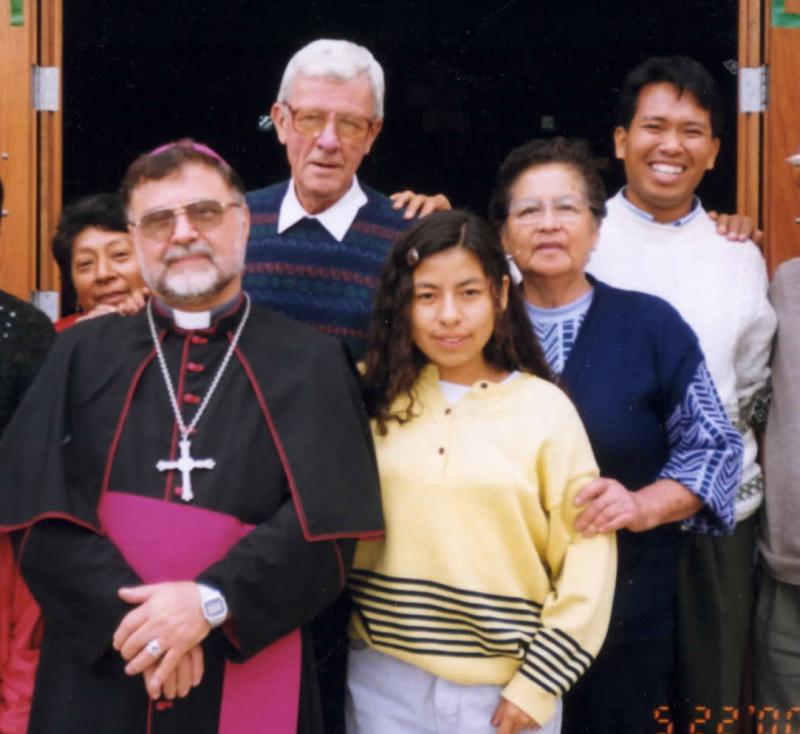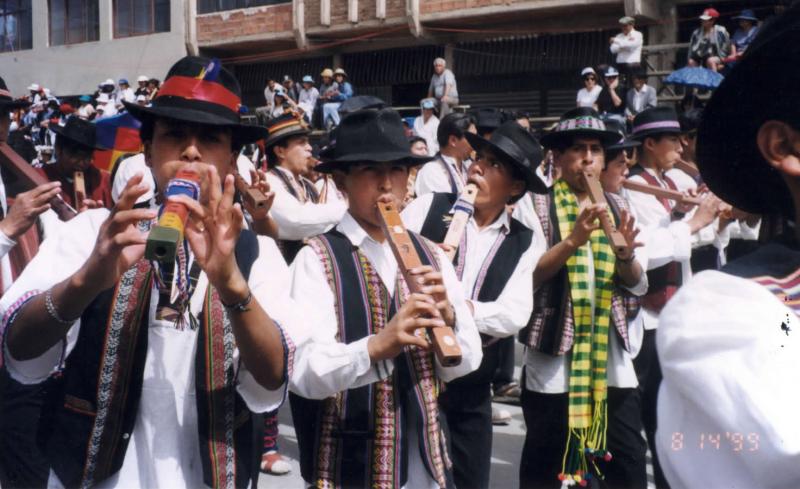In Peru, Things Are Moving
The Church in Peru becomes more missionary
By Fr John O’Connell MSSC

When I first came here some forty years ago and worked in the parish of Saint Martin de Porres we had an average of five pastoral meetings per week. We had one central church where we celebrated seven Masses on Sunday with two morning masses on weekdays.
Now as I work in the parish of St. Peter and St. Paul, with much the same number of Catholics (40,000) we have chapels for each five communities, each with its own pastoral council and activities. There is an ever increasing need to decentralize and to have lots of meeting rooms.
Necessity is the mother of invention
During the late 80s to early 90s, there was a newly built-up urban area adjacent to a number of Columban parishes with little or no presence of Church. The Columbans were already overstretched and “cut-backs” were being insisted on from the hilltops. The Columbans made several approaches to the Archdiocese to move on the matter. Promises were made but no action.
So it was in 1994 that the Columban group decided to muster and prepare teams of five or six laity from each of the eight neighboring Columban parishes to go and evangelize a section in each of the area.
Mobilizing the Laity
At first the task was not easy because of the dusty streets, not knowing the area or the people. It meant knocking on doors and explaining that they were Catholic missionaries and not of other denominations. The response was positive and in a short time Bible study and prayer groups began. There were programs to take care of the sick and the elderly. The people began to assemble for Sunday Liturgy and to look for building sites for chapels and meeting rooms. Baptisms, First Communions and weddings were conducted and some were also prepared to work as lay leaders.
Despite shortcomings the whole effort was definitely considered to be successful. The upshoot was that the people needed and requested the permanent presence of a pastor so the Columbans decided to take responsibility and the parish of Our Lady of the Missions is now a thriving parish.

Widening the Horizon
In early 1998 the Columban group in Peru had what should be termed “watershed-assembly”. We decided on an integral vision statement and plan of action for 1998-2005. It certainly has given focus and energy to the group; it was the work of all in the region and has everybody’s support. One of the main thrusts of the program was to help the Peruvian Church become more missionary.
We began to have monthly meetings of some 120 people at our center house where themes related to mission, the Church and the Columban charism were treated. There was plenty of joy and enthusiasm.
Mission to the Interior
By January-February 1999 we were able to send four teams of five missionaries to some villages in the Andes. Seventy percent of our missionaries were female and this in itself had a tremendous impact in the Andean villages where, traditionally catechists were male. They received a very warm welcome, did good work and often the local communities wanted them to stay on, pleaded with them to come back. The catechists testified all of this to their local parishes here in Lima on their return. That same year we had 80 people signed up to go on mission to the ‘interior’.
Missionaries in abundance
I figure that the happiest and greatest day of my life here in Peru was when the group of missionaries had come back from their various assignments and gave testimonies to the “joys and hope, sadness and distress” of their experience. Indeed, the composition of Columban group here in Peru has made a lot of difference in the lives of the people here. Every year, more and more missionaries are signing up their ‘yes’. And now, more and more missionaries from abroad are also joining us here. We now have the newly ordained priest with us from the Philippines, Fr. Rolly Aniscal. He is of pleasant disposition, gets on well with the youth, loves to sing and plays the flute, so we should get along all right. As I write this I can hear him sing at the top of his voice. He figures he is John McCommack. I guess, after all those more than forty years of spending my energy on mission organizing here inPeru, I still would have to learn to cope with youthful exuberance.
